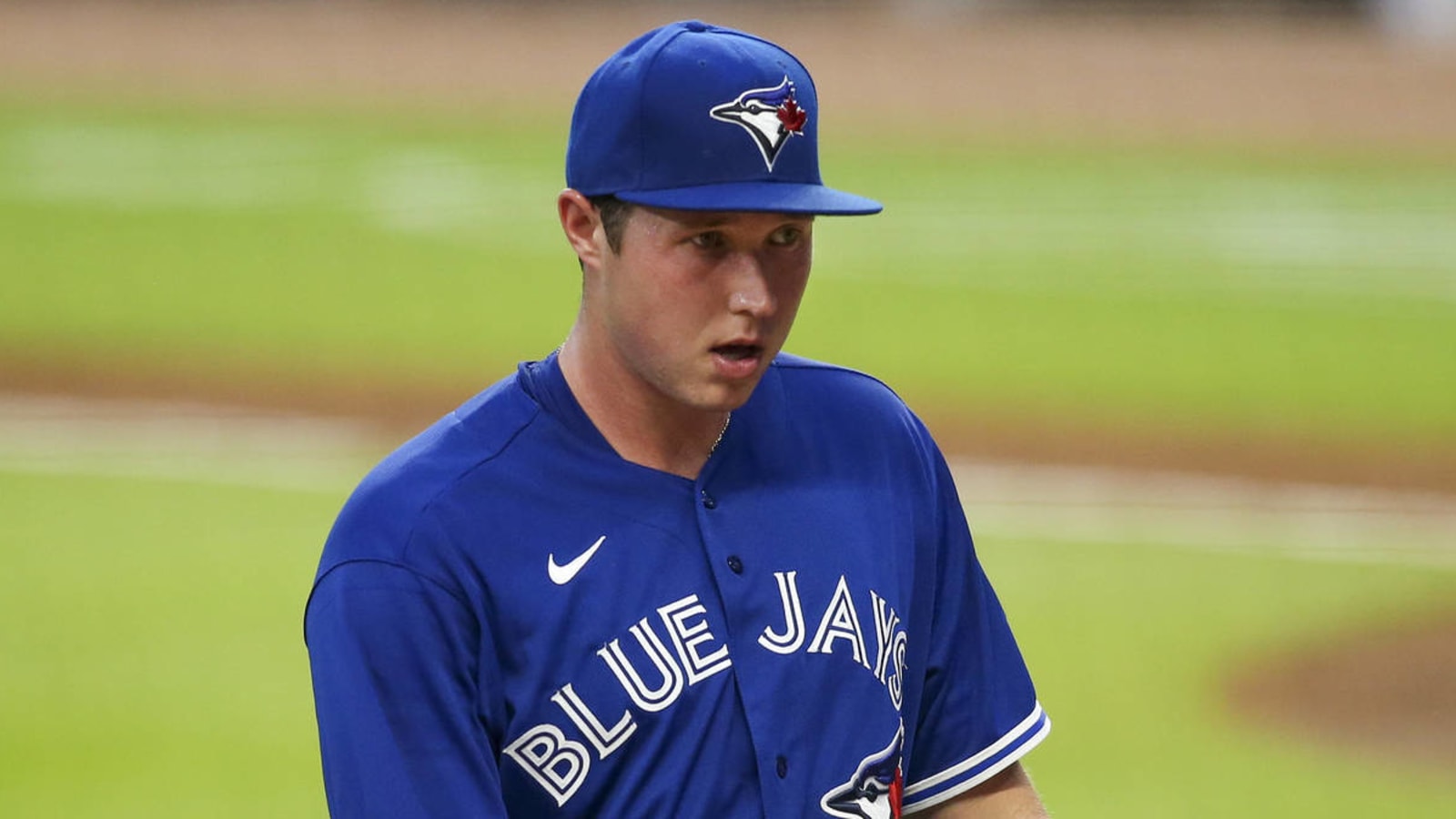
The Toronto Blue Jays committed roughly $52 million in average annual salary this offseason to four players who will man substantial roles and make a difference for their 2021 roster (George Springer, Marcus Semien, Kirby Yates, and Tyler Chatwood). At the same time, while these players improve the Blue Jays, they don’t make them an American League pennant contender. What makes manager Charlie Montoyo‘s ballclub such a threat is their young starting pitchers taking an enormous step forward.
As is, their rotation will be some combination of Hyun-Jin Ryu, Tanner Roark, Robbie Ray, Ross Stripling, Nate Pearson, Steven Matz, and Anthony Kay.
Outside of Ryu, the team’s cunning ace, this is a rotation of uncertainty.
Roark posted a 6.80 ERA across 11 starts in Major League Baseball’s 60-game season. Ray has been unable to regain a speck of his old ways (being a top-of-the-rotation starter), struggling to provide length and getting hit hard early in outings. Stripling is a spot starter coming off a rocky season.
Pearson and Kay made their big-league debuts last season, where they made a combined 18 appearances. Matz has surrendered 66 home runs over his last 71 appearances, 66 of which have been starts and pitched through the fifth inning in just two of his six starts with the New York Mets last season.
Pearson, Matz, and Kay are the prime candidates who could change the game for the Blue Jays.
Pearson is the team’s long-standing top prospect. They obviously have high hopes for the right-hander.
Matz was acquired from New York in January and offers the Blue Jays the chance to embark on a reclamation project, as he has been a reliable left-handed starting pitcher with a considerable sinker in the past.
Like Pearson, Kay has been one of the team’s top pitching prospects in recent memory and made his MLB debut last season. He could come into his own and provide the Blue Jays with a reliable pitcher to take the hill every fifth day this season.
Will veterans return to form? Can the kids take the next step? It’s a lot of what-ifs, but something has to give.
Objectively speaking, this should be a respectable, middle-of-the-pack rotation. It’s feasible to expect Roark and Matz to pitch better than they did in 2020 and young arms like Pearson and Kay to make strides.
But the above scenarios don’t ensure a playoff appearance.
There’s merit behind the notion of the Blue Jays sporting the best offensive attack in the AL next season. Springer, Semien, Bo Bichette, Teoscar Hernandez, Cavan Biggio, Vladimir Guerrero Jr., and Rowdy Tellez will make for a multi-faceted, fearsome unit that does big-time damage. Meanwhile, Yates and Chatwood beef up the bullpen, as do the arms that don’t crack the starting rotation.
The Blue Jays making the playoffs in a traditional, modern-day MLB format (five teams in each league) is a matter of a significant emergence in their rotation or a couple of individuals rising to respectability. There’s only one pitcher on this staff who the Blue Jays can feel comfortable starting in a postseason game, and that pitcher has a shaky injury history over the last decade (Ryu). Montoyo needs someone else who he can feel comfortable sending to the hill in a win-or-go-home situation.
How many teams win 90 games with a so-so rotation and a great offense? Very few, if any do.
There’s nothing wrong with the contracts Toronto gave Springer (six-year, $150 million deal) and Semien (one-year, $18 million deal). They’re two of the best players at their respective positions and were handed justifiable contracts.
The issue is Toronto had a preexisting and improving offense that was already a well-oiled machine. Did they need some veteran pop? Of course. Did team president Mark Shapiro need to back up the truck for one of the best position players on the open market, rather than signing or trading for one or two middle-to-top-of-the-rotation starters? He did not.
Now, there are examples of teams finding success with the reverse model (a so-so offense and a great rotation) with the defending AL-champion Tampa Bay Rays serving as the latest example.
Speaking of the Rays, the Blue Jays aren’t on the same footing as some of their AL East rivals.
Sure, the Rays lost/traded Blake Snell and Charlie Morton. At the same time, they have a pitching pipeline, are defensively sound, and have a bevy of capable hitters. Albeit they’ve been unable to win the AL with their deep-rooted core, the New York Yankees have a roster in World Series contention on a yearly basis, a state that remains unchanged. Maybe healthy versions of Chris Sale and Eduardo Rodriguez get the Boston Red Sox back to .500?
There’s a mountain to climb in the AL East.
The Toronto Blue Jays will be better in 2021. Their record, however, won’t show it without them finding a remedy for their roster’s ongoing ailment.
More must-reads:
- Blue Jays RP Kirby Yates to miss 'multiple weeks' with flexor strain
- Blue Jays hopeful of playing home games in Toronto later in season
- The 'Most postseason home runs' quiz
Breaking News
Customize Your Newsletter
 +
+
Get the latest news and rumors, customized to your favorite sports and teams. Emailed daily. Always free!

